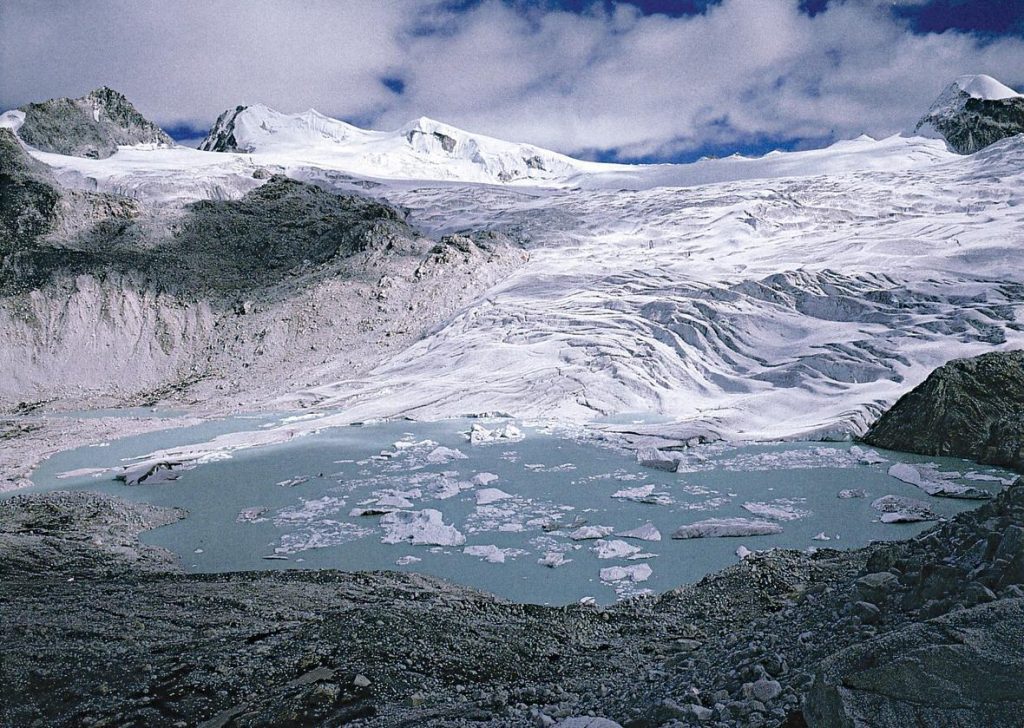New Delhi: Himalayan glaciers across India, China, Nepal and Bhutan have been losing the equivalent of more than a vertical foot and half of ice each year since 2000, a new comprehensive international study said Wednesday.
The analysis, spanning 40 years of satellite observations, indicates that melting of the Himalayan glaciers caused by rising temperatures has accelerated dramatically since the start of the 21st century – almost double the amount of melting that took place from 1975 to 2000.
The study is the latest and perhaps most convincing indication that climate change is eating the Himalayas’ glaciers, potentially threatening water supplies for hundreds of millions of people downstream across much of Asia.
“This is the clearest picture yet of how fast Himalayan glaciers are melting over this time interval, and why,” said lead author Joshua Maurer, a Ph.D. candidate at Columbia University’s Lamont-Doherty Earth Observatory.
While not specifically calculated in the study, the glaciers may have lost as much as a quarter of their enormous mass over the last four decades, said Maurer.
The study appears this week in the journal Science Advances.
Currently harbouring some 600 billion tonnes of ice, the Himalayas are sometimes called the earth’s “Third Pole”.
Many other recent studies have suggested that the glaciers are wasting, including one this year projecting that up to two-thirds of the current ice cover could be gone by 2100.
But up to now, observations have been somewhat fragmented, zeroing in on shorter time periods, or only individual glaciers or certain regions.
These studies have produced sometimes contradictory results, both regarding the degree of ice loss and the causes.
The new study synthesises data from across the region, stretching from early satellite observations to the present. The synthesis indicates that the melting is consistent in time and space, and that rising temperatures are to blame.
Temperatures vary from place to place, but from 2000 to 2016 they have averaged 1°C (1.8°F) higher than those from 1975 to 2000.
Maurer and his colleagues analysed repeat satellite images of some 650 glaciers spanning 2,000 kms from west to east. Many of the 20th-century observations came from recently declassified photographic images taken by US spy satellites.
The researchers created an automated system to turn these into 3D models that could show the changing elevations of glaciers over time.
They then compared these images with post-2000 optical data from more sophisticated satellites, which more directly convey elevation changes.
They found that from 1975 to 2000, glaciers across the region lost an average of about 0.25 metres (10 inches) of ice each year in the face of slight warming.
Following a more pronounced warming trend starting in the 1990s, starting in 2000 the loss accelerated to about half a meter annually.
Recent yearly losses have averaged about 8 billion tonnes of water, or the equivalent 3.2 million Olympic-size swimming pools, said Maurer.
Most individual glaciers are not wasting uniformly over their entire surfaces, he noted; melting has been concentrated mainly at lower elevations, where some ice surfaces are losing as much as five metres a year.
Some researchers have argued that factors other than temperature are affecting the glaciers. These include changes in precipitation, which seems to be declining in some areas (which would tend to reduce the ice), but increasing in others (which would tend to build it).
Another factor: Asian nations are burning ever-greater loads of fossil fuels and biomass, sending soot into the sky.
Much of it eventually lands on snowy glacier surfaces, where it absorbs solar energy and hastens melting.
Maurer agrees that both soot and precipitation are factors, but due to the region’s huge size and extreme topography, the effects are highly variable from place to place.
Overall, he says, temperature is the overarching force. To confirm this, he and his colleagues compiled temperature data during the study period from ground stations and then calculated the amount of melting that observed temperature increases would be expected to produce.
They then compared those figures with what actually happened. They matched.
“It looks just like what we would expect if warming were the dominant driver of ice loss,” he said.
IANS
